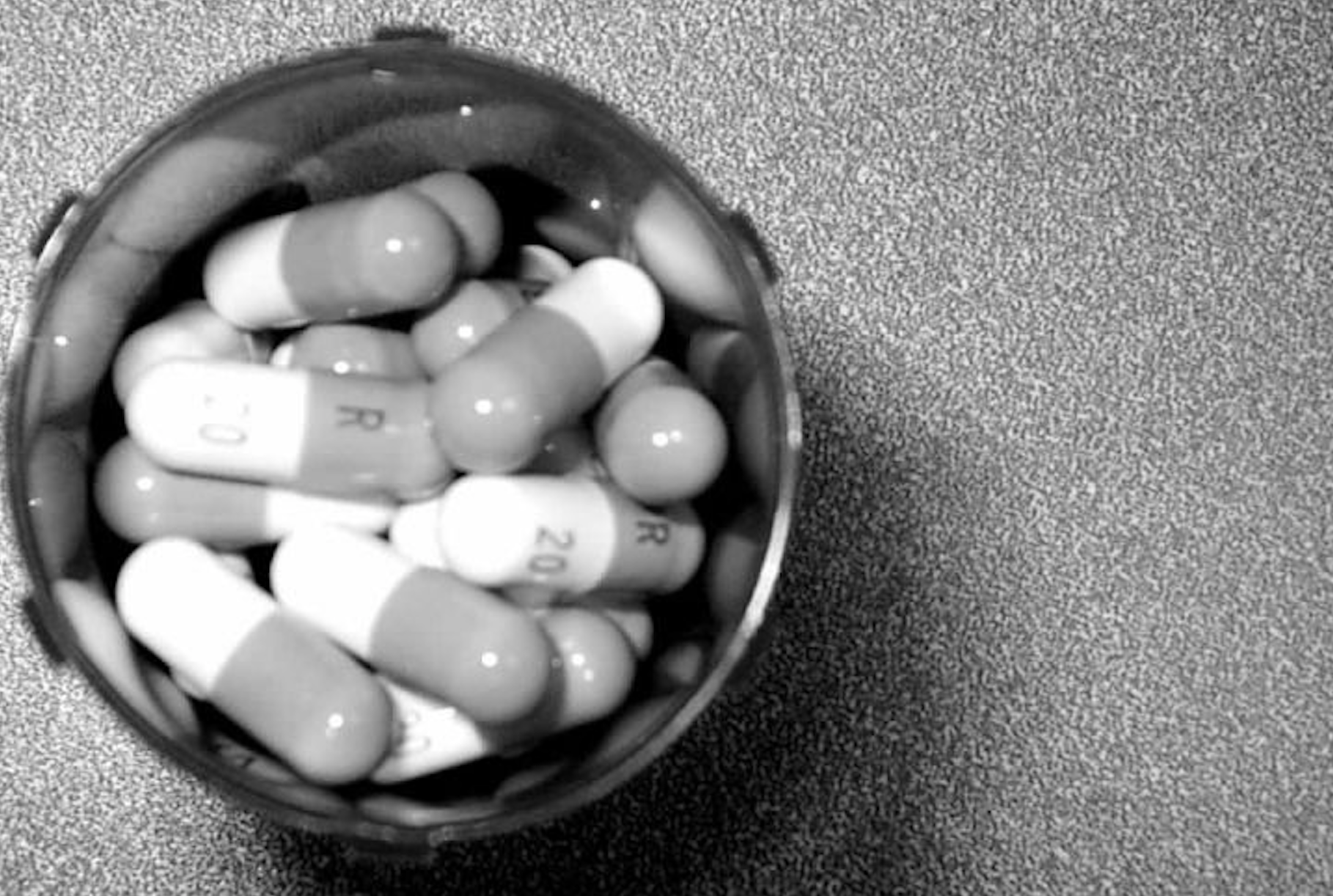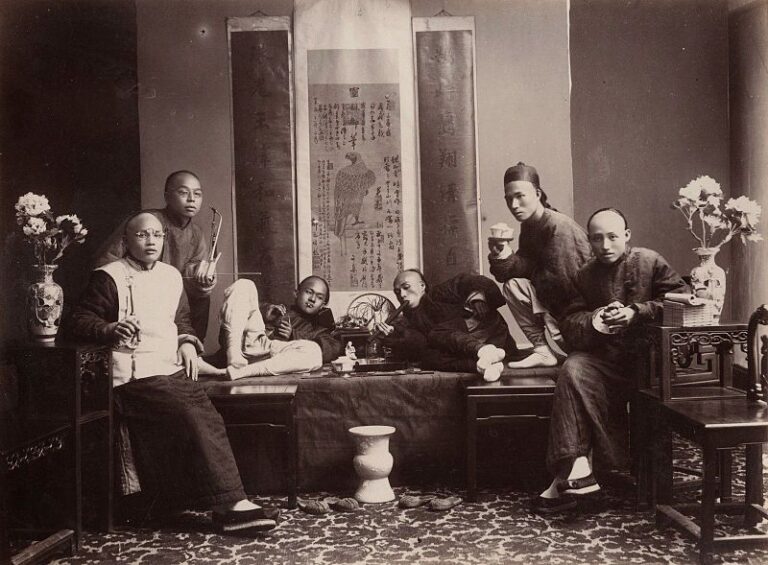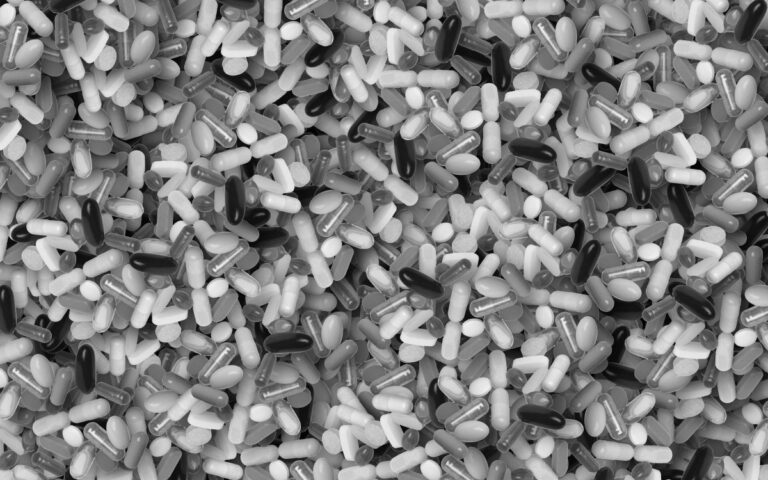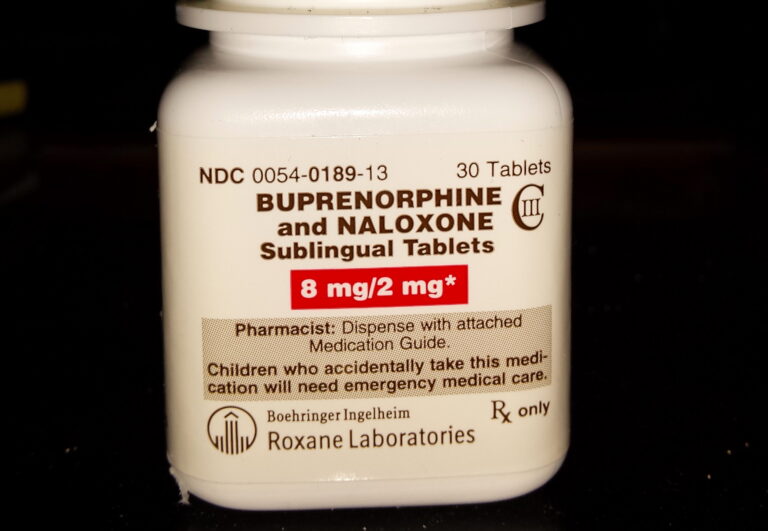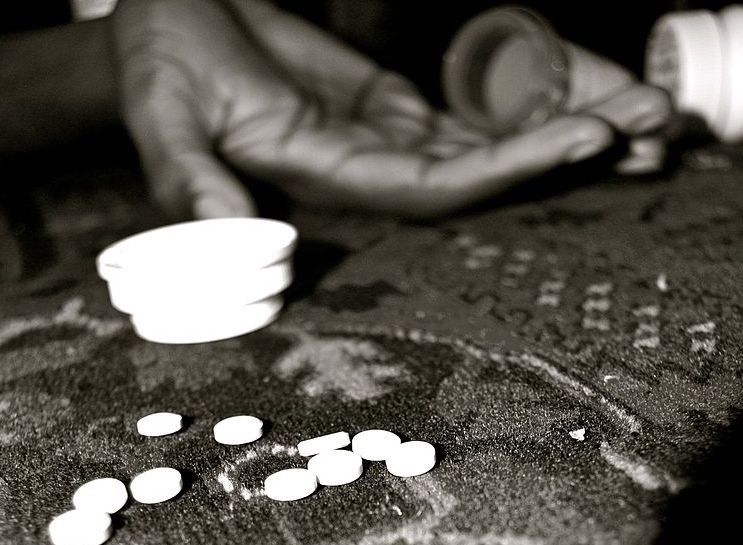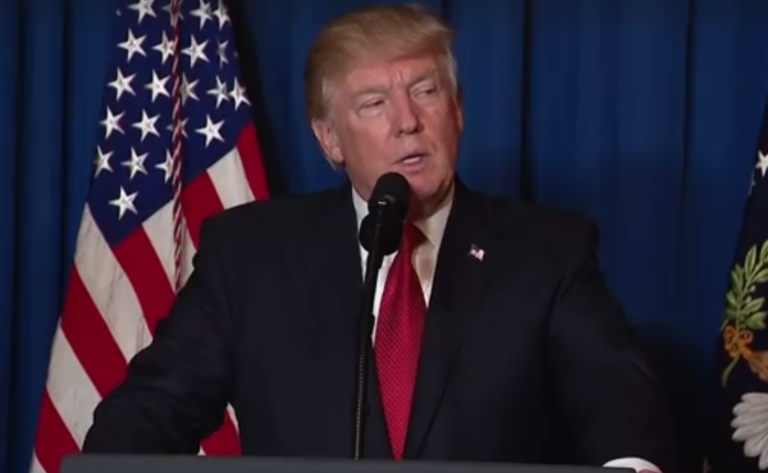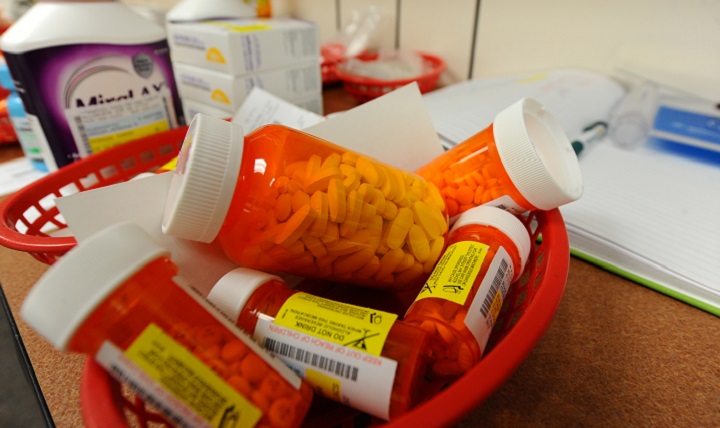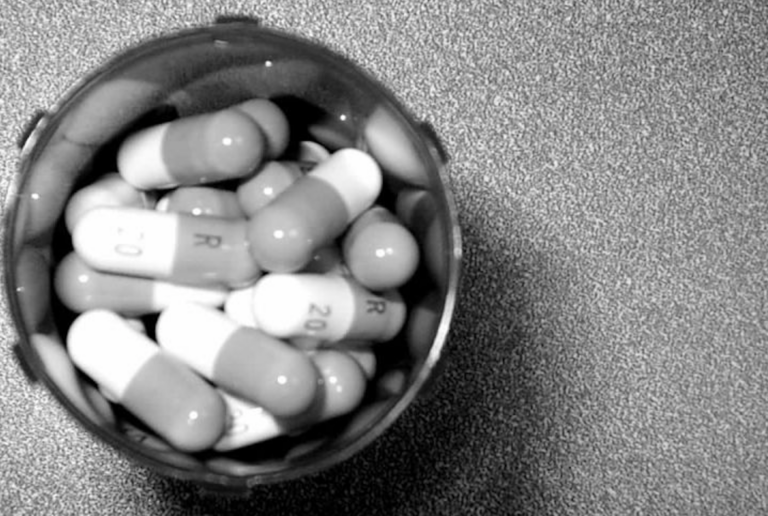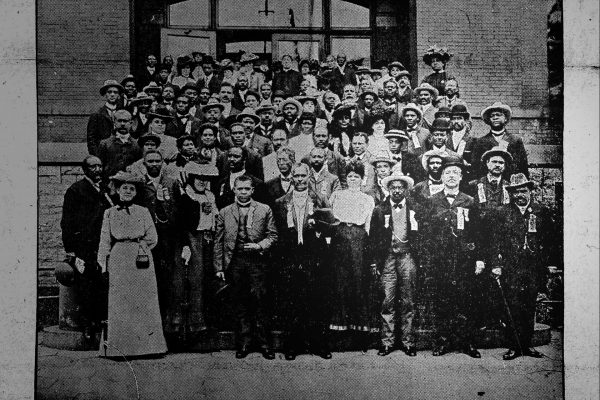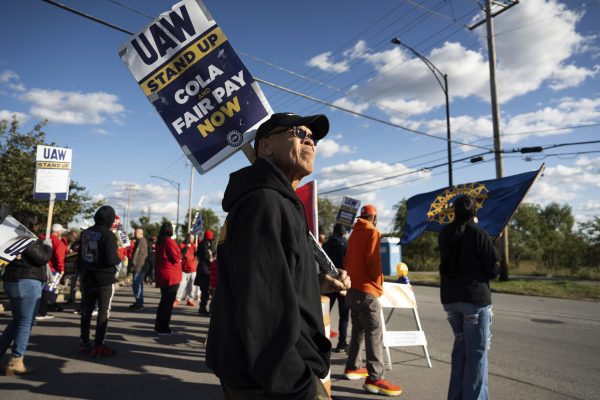In March 2018, President Donald Trump delivered a forty-minute speech about the crisis of addiction and overdose in New Hampshire. Standing before a wall tiled with the words “Opioids: The Crisis Next Door,” Trump blankly recited the many contributors to the current drug epidemic, including doctors, dealers, and manufacturers. Trump droned on mechanically until he reached a venomous crescendo about Customs and Border Protection’s seizure of 1,500 pounds of fentanyl. He brightened as he shifted focus to three of his most hated enemies, first blaming China and Mexico for saturating the United States with deadly synthetic opioids, then moving seamlessly to what he considered one of the great internal threats: “My administration is also confronting things called ‘sanctuary cities,’” Trump declared. “Ending sanctuary cities is crucial to stopping the drug addiction crisis.”
Like so many of Trump’s proclamations, this rhetoric is sheer political fantasy.
Since the late 1990s, yearly rates of overdose deaths from legal “white market” opioids have consistently exceeded those from heroin. According to the Centers for Disease Control and Prevention, between 1999 and 2017, opioid overdoses killed nearly 400,000 people with 68 percent of those deaths linked to prescription medications. Moreover, as regulators and drug companies tightened controls on diversion and misuse after 2010, the American Society of Addiction Medicine determined that at least 80 percent of “new heroin users started out misusing prescription pain killers.” Some data sets point to even higher numbers. In response to a 2014 survey of people undergoing treatments for opioid addiction, 94 percent of people surveyed said that they turned to heroin because prescription opioids were “far more expensive and harder to obtain.”
In the face of these statistics, the claim that the opioid crisis is the product of Mexican and Central American migration—rather than the deregulation of Big Pharma and the failures of a private health care system—is not only absurd, but insidious. It substitutes racial myth for fact, thereby rationalizing an ever-expanding machinery of punishment while absolving one of the most lucrative, and politically influential, business lobbies in the United States. This paradoxical relationship between a racialized regime of illegal drug prohibition and a highly commercial, laissez-faire approach to prescription pharmaceuticals cannot be understood without recourse to how racial capitalism has structured pharmacological markets throughout U.S. history. The linguistic convention of “white” and “black” markets points to how steeped our ideas of licit and illicit are in the metalanguage of race.
Historically, the fundamental division between “dope” and medicine was the race and class of users. The earliest salvos in the U.S. domestic drug wars can be traced to anti-opium ordinances in late nineteenth-century California as Chinese laborers poured into the state during the railroad building boom. In 1914 the federal government passed the Harrison Narcotics Act, which taxed and regulated opiates and coca products. Similarly, as rates of immigration increased in the aftermath of the Mexican revolution, Congress passed the Marijuana Tax Act of 1937, which targeted the customs and culture of newly settled migrants. Although “cannabis” was well known in the United States—it was used in numerous tinctures and medicines—a racial scare campaign swept the country and warned that “marijuana” aroused men of color’s violent lust for white women.
As bad as the early drug panics were, they paled in comparison to the carceral regime of drug prohibition and policing that emerged in the years after the civil rights movement. In the 1980s and 1990s, mass incarceration and the overlapping War(s) on Drugs and Gangs became de facto urban policy for impoverished communities of color in U.S. cities. Legislation expanded state and federal mandatory minimums for drug offenses, denied public housing to entire families if any member was even suspected of a drug crime, lengthened the list of crimes eligible for the federal death penalty, and imposed draconian restrictions of parole. Ultimately, multiple generations of youth of color found themselves confined under long prison sentences and faced with lifelong social and economic marginality.
Today, much of the Trump administration’s rhetoric is taken from decades of drug and incarceration frenzies past, including the threat of the death penalty for drug trafficking (Bill Clinton), Just Say No campaigns (Ronald Reagan), and the reinvigoration of the War on Gangs (Bill Clinton again). “We are all facing a deadly lucrative international drug trade,” warned Trump’s then attorney general, Jeff Sessions. As he spoke before the International Association of Chiefs of Police in the fall of 2017, Sessions laid out a law-and-order platform that promised to “back the blue,” reduce crime, and dismantle “transnational criminal organizations.” He drew so heavily from 1980s anti-drug hysteria, in fact, that he earned giddy praise from Edwin Meese III, Reagan’s attorney general who helped enshrine the 100-to-1 sentencing disparity between crack and powder cocaine. “Largely unnoticed has been the extraordinary work that . . . Sessions has done in the Department of Justice to create a Reaganesque resurgence of law and order,” Meese opined in USA Today in January 2018.
Over the past two years, Trump and Sessions repeatedly used the threat of drugs and racial contagion for a reactionary portfolio ranging from reversals of modest criminal justice reforms of the Obama era—including reinstating federal civil forfeiture, limiting federal power to implement consent decrees at the local level, and the expansion of mandatory minimum sentencing in the federal system—to the building of a wall along the Mexican border. And, although anti-crime rhetoric no longer has the same purchase as it did in the era of Willie Horton or Ricky Ray Rector—thanks in large part to activist efforts to delegitimize mass incarceration—the reinvigorated machinery of criminalization remains firmly in place.
Integrating the opioid crisis with the War on Drugs raises questions beyond familiar narratives and political discourses. In the United States, prohibition of illicit drugs and the mass marketing of licit pharmaceuticals fit together in a larger framework of racial capitalism and deregulation that are deeply intertwined and mutually reinforcing. The opioid crisis would not have been possible without the racial regimes that have long structured both illicit and licit modes of consumption. As we will see, the demonization of urban, nonwhite drug users played a crucial role in the opening of “white” pharmaceutical markets in the 1990s that proved so enormously profitable to companies such as Purdue Pharma and paved the way for our current public health crisis.
In the 1990s, Purdue created aggressive marketing campaigns to convince doctors and state regulators of the safety of a new class of timed-release opioid analgesics. Given their status as Schedule II controlled substances, Purdue faced potentially enormous pushback, especially at a time when the number of people incarcerated for drug offenses was reaching an all-time high. However, a major shift had taken place in regulatory policy a decade before that made this possible. In the 1980s, President Reagan initiated a radical program of corporate deregulation that opened the door to a new era of pharmaceutical mass marketing. Reagan’s “Second American Revolution” slashed government oversight, pushed through expedited review by the Food and Drug Administration (FDA), and for the first time allowed direct-to-consumer advertising for pharmaceutical drugs.
Amazingly, the deregulation of Big Pharma took place while the Reagan administration was launching a bombastic “second” War on Drugs that established a new standard for illicit drug prohibition, one his successors George H. W. Bush and Bill Clinton not only met but exceeded. This potent mix of racialized drug prosecution and corporate empowerment created the environment in which Purdue and other companies sought out new commercial strategies for marketing opioids.
So when Purdue introduced OxyContin in 1996, it proceeded with an awareness of both the opportunities and potential pitfalls. The company developed a number of marketing strategies to increase sales and to navigate the deeply segregated waters of drug consumption. In order to market OxyContin, a long-term release opioid that contains the active ingredient oxycodone, Purdue created an expansive network of sales representatives, doubling its internal sales force from 318 in 1996 to 671 in 2000. Driven by sophisticated data collection methods that revealed the highest and lowest prescribers in every zip code throughout the United States, Purdue identified medical practices with the largest numbers of pain patients and with physicians who were the least discriminate prescribers. Sales representatives received bonuses ranging from $15,000 to $240,000 a year for increases in opioid prescriptions in their coverage areas, and they visited doctors repeatedly, drawing them into an elaborate informational marketing campaign. Purdue offered doctors educational conferences in Sunbelt resorts, patient coupons, OxyContin-branded stuffed animals, and even CDs of the drug’s marketing jingle, “Get in the Swing of OxyContin.”
The company’s aggressive sales tactics convinced primary care physicians (PCPs) to prescribe opioids much more frequently for a wide range of patient complaints, including lower back pain and arthritis. By 2003 PCPs made up nearly half of OxyContin prescribers. Some experts at the time worried that PCPs lacked independent training in chronic pain management and addiction. Meanwhile the increase in the sale of OxyContin—from $48 million upon its introduction to $1.1 billion four years later—demonstrates the enormous scale of this enterprise.
According to public health scholars Helena Hansen and Julie Netherland, Purdue’s success hinged not only on this aggressive sales campaign, but also on racially bifurcated understandings of addiction. Drug sales representatives directed advertisement to overwhelmingly white suburban and rural areas to avoid the stigma of racially coded urban drug markets. By crafting a geographically distinct, white consumer base—understood as the antithesis of “hardcore” (nonwhite) urban drug users targeted by the Wars on Drugs and Gangs—the company both benefitted from and reinforced the racial ideology underwriting these punitive campaigns.
Not surprisingly, the regions that initially showed the highest rates of opioid abuse in the early 2000s—including rural Maine, West Virginia, Kentucky, and western Pennsylvania—had overwhelmingly white populations. Although the press termed OxyContin “hillbilly heroin” and the drug of choice for poor whites, public health researchers have shown that affluent suburbanites also had high rates of abuse, exemplified by Rush Limbaugh’s disclosure of his own prescription opioid abuse in 2003. Racial disparities in health care access, discriminatory prescribing patterns among physicians, and a self-conscious strategy by pharmaceutical companies that cultivated “legitimate” white consumer markets all contributed to the racial demographics of the opioid crisis.
A key reason that pharmaceutical companies could market such a powerful sustained release analgesic to treat “non-malignant pain” was that they made assumptions about their intended consumers. “The disproportionate uptake of OxyContin by rural and suburban prescribers in majority white states (Maine, Kentucky and West Virginia) is notable in light of the historical hostility of regulatory agencies such as the DEA to the expansion of opioid use,” argue Hansen and Netherland. “Urban markets would have brought with them race and class imagery of illicit use that may have made expanded prescription of OxyContin for moderate pain a hard sell to regulators.”
In a similar line of analysis, pharmaceutical historian David Herzberg, author of Happy Pills in America: From Miltown to Prozac (2009), places the opioid crisis in the larger sweep of U.S. history. According to Herzberg, there is no real difference between prescription medicines and illicit drugs. Both possess physical and psychoactive effects, but the social meaning attributed to them has more to do with race, class, and differential application of state power than pharmacology. The contemporary disparity between licit and illicit has its origins in the Jim Crow era, when the Supreme Court back the principle of separate but equal. In the years after World War II, the civil rights movement challenged racial discrimination in consumer markets, rendering illegal the most overt forms of discrimination, such as segregated lunch counters, public conveyances, and housing covenants. But the racialized division between licit and illicit drug markets endured. Indeed, it provides a primary rationale for the Wars on Drugs and Crime that emerged after the Voting Rights Act. Today African Americans and Latinos make up 80 percent of those incarcerated in federal prisons for drug crimes and 60 percent of those in state prisons.
One of the most compelling aspects of Herzberg’s analysis is his historical exploration of how postwar white consumers defined themselves against racially coded, urban drug users by redefining pharmacological relief as an entitlement. In the same period that Richard Nixon launched the first War on Drugs, white consumers steeped in the discourse of the silent majority demanded access to pharmaceuticals as a citizenship right. “I, as one American citizen make demand at this writing to restore all the drugs that people need,” argued a complaint to the FDA. “Too many people are suffering and being penalized on account of the drug abusers.”
This “problematic social entitlement” functioned as the flip side of the more familiar story of criminalization and divestment of black and brown populations in the Wars on Drugs and Crime. Prohibition of urban vice required a space of white absolution that enabled the profitable mass-marketing of licit pharmaceuticals. “A focus on pharmaceutical white markets tells a very different story: of a divided system of drug control designed to encourage and enable a segregated market for psychoactive substances,” Herzberg argues. “This regime established a privilege—maximal freedom of rational choice in a relatively safe drug market . . . and linked this privilege both institutionally and culturally to social factors such as economic class and whiteness.”
Cultural logics, as well as criminal justice policy, have also reinforced and animated the racialized boundary between “licit health seekers” and “illicit pleasure seekers” in the popular imagination. Iconic drug films such as Traffic (2000) and Requiem for a Dream (2000) dramatize the tragedy of white women’s descent into illegal narcotic use through pornographic narratives in which “innocent” young white girls are coerced into interracial sex by black male “pushers.” Drawing on the cinematic grammar of D. W. Griffith’s classic KKK paean Birth of a Nation (1915), they reenact the white supremacist ideology that reinforced racial segregation. Viewed in this way, the opioid crisis appears not as an unprecedented phenomenon, but the product of longstanding historical processes.
The role of white absolution is even clearer when looking at the disparate consequences for illicit drug use across the color line. Nothing speaks more profoundly to how the state artificially constructed segregated drug markets than federal prosecutions for crack use. Few realize that almost no white people were ever charged with crack offenses by federal authorities. This is despite the federal government’s own data from the National Institute of Drug Abuse (NIDA) documenting that over two-thirds of crack users were white. Between 1986, when Congress signed the Anti-Drug Abuse Act into law, and 1994, when President Clinton’s crime bill was passed, not a single white person was convicted of a federal crack offense in Miami, Boston, Denver, Chicago, Dallas, or Los Angeles. “Out of hundreds of cases, only one white was convicted in California, two in Texas, three in New York and two in Pennsylvania,” noted Los Angeles Times reporter Dan Weikel. Instead, prosecutors shunted their cases into the state system, which had much lower rates of conviction and shorter sentences.
At the heart of this disparity is the paradoxical relationship in the United States between prohibition and provision: some of the harshest advocates for punishment and the criminalization of illicit drug use have also enthusiastically supported and defended pharmaceutical deregulation and expanded access to opioids. If there is any doubt about Trump’s acquiescence to Big Pharma—despite his campaign promises to lower Medicare drug prices—one need look no further than his appointment of Alex Azar II, former president of the U.S. division of pharmaceutical giant Eli Lilly and Co., to serve as secretary of health and human services.
The career of Rudolph Giuliani is one of the best examples of this cognitive dissonance around drug policy that can only properly be understood as a product of racial capitalism. As mayor of New York (1994–2001), Giuliani and his police commissioner, William Bratton, were central architects of the city’s zero tolerance, quality-of-life policing, which criminalized low-level offenses ranging from panhandling and graffiti to illegal vending and minor cannabis possession. Giuliani’s administration presided over about 40,000 marijuana arrests per year, up nearly fortyfold from earlier decades. In fact, the highest number of marijuana possession arrests ever recorded in New York City took place under the Giuliani administration, with 51,267 arrests in the year 2000. Giuliani also led a vicious campaign against methadone treatment in the 1990s, advocating complete abstinence as the only acceptable response to illicit drugs.
Given his hardline stance on drug prohibition, it is striking that two years after New York’s all-time high for marijuana arrests, the former New York mayor and prosecutor took on Purdue Pharma as a client, agreeing to help the company fend off a federal investigation into improper marketing of OxyContin. “There are tens of millions of Americans suffering from persistent pain,” argued Giuliani. “We must find a way to ensure access to appropriate prescription pain medications for those suffering from the debilitating effects of pain while working to prevent the abuse and diversion of these same vital medicines.”
John Brownlee, a U.S. attorney from the western district of Virginia, initiated the investigation into Purdue Pharma shortly after his federal appointment in response to skyrocketing numbers of opioid overdoses in his region. “This was pushed by the company to be marketed in an illegal way, pushed from the highest levels of the company, that in my view made them a criminal enterprise that needed to be dealt with,” Brownlee explained. Although the young attorney’s legal action was the first successful criminal suit against Purdue, the company currently faces a number of civil suits from other states, including Texas, New York, Indiana, and Massachusetts. (Already, in March, it agreed to a $270 million settlement with the state of Oklahoma.)
In the Viriginia case, Giuliani provided Purdue with legal services as well as access to his extensive network of political connections in Washington. He finessed an agreement that kept senior executives from serving prison time and attempted to restrict future prosecution of Purdue. According to the Guardian, Giuliani’s intervention avoided “a bar on Purdue doing business with the federal government which would have killed a large part of the multibillion-dollar market for the drug.”
Activists, investigative journalists, and public sector attorneys have produced a significant body of work documenting the culpability of pharmaceutical companies in the contemporary opioid crisis. Until quite recently, however, this history has largely failed to penetrate mainstream opinion. Despite the pathbreaking investigative journalism of Barry Meier’s Pain Killer (2003) and Chris McGreal’s American Overdose (2018), popular exposés have frequently centered on unethical practices by The origins of the opioid crisis in the licit pharmaceutical market calls not only for a rethinking of the politics of deregulation, but also an end to the racialized War on Drugs narrative. individual doctors and “pill mills,” rather than excavating how Purdue and other companies built a commercial infrastructure that revolutionized narcotics sale at enormous social cost. Culpability is shared by a resource-starved FDA and regulatory infrastructure’s failure to intervene when it became apparent that widespread abuse was taking place. Unfortunately, the young have been the hardest hit. The New York Times recently estimated that nearly 400,000 people currently addicted to prescription opioids or heroin are between 18 and 25 years old. Even more troubling is that in states such as Ohio and West Virginia with the highest rates of prescription opioid consumption, 50–80 percent of foster care placements are linked to substance abuse in the home. In the realm of health and human pain, free market fundamentalism has proved quite deadly.
The origins of the opioid crisis in the licit pharmaceutical market calls not only for a rethinking of the politics of deregulation, but also an end to the sclerotic, racialized War on Drugs narrative still mobilized by the Trump administration. In moving testimony before the House Judiciary Committee on Immigration and Border Security, Stanford psychologist and West Virginia native Keith Humphreys spoke directly to this issue in February 2018:
West Virginia is emblematic of where this epidemic is at its most destructive—rural areas that don’t have sanctuary cities and indeed generally don’t have cities at all. Recent immigrants are rare, yet opioid addiction is rampant. That’s because the opioid epidemic was made in America, not in Mexico, China, or any other foreign country. The astonishing increase in providing opioids—which at its apex reached nearly a quarter billion prescriptions per year—is what started and still maintains our opioid epidemic. Prescription opioids come from American companies and are prescribed by American doctors overseen by American regulators.
Like many crises, our current dilemma also presents opportunities to radically rethink our approaches to both prohibition and provision. In addition to recognizing the role of Big Pharma, a critical look at the opioid crisis also requires examining the larger environment in which this predatory marketing campaign took place. Structural issues of economic downward mobility, diminished occupational safety and health protections, lack of health care access, and the limitations of managed care have all contributed.
Critically, we must push back against the racist logic that has long underwritten prohibition efforts while occluding, and even assisting, the pharmaceutical industry’s attempt to expand its reach. Phantasms of drug sale and consumption continue to animate deeply felt national narratives demarcating the line between white and black, native and foreign, innocent and guilty, medical and recreational, deserving and undeserving, licit and illicit. The Trump administration, like its Democratic and Republican predecessors, has drawn some of its most destructive symbols of racial animus from the War on Drugs repertoire. One of the most important lessons to be learned from viewing the opioid crisis and War on Drugs through the lens of racial capitalism is that the privileges of whiteness come at a great social cost, not only for those excluded from them, but also for those who possess them. As our nation witnesses a significant drop in life expectancy due to high rates of suicide and overdose, an honest reckoning with the true nature of power and culpability in the United States has never been more urgent.
